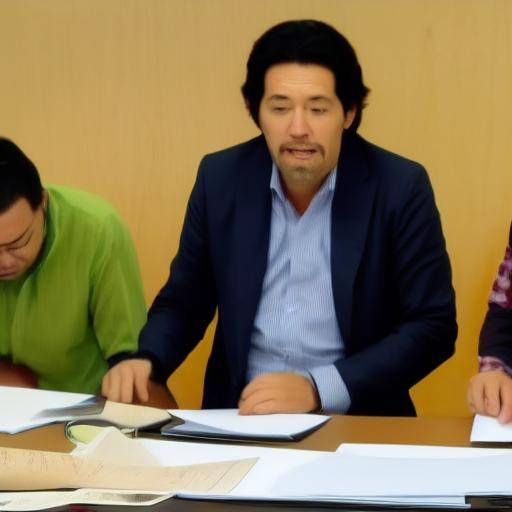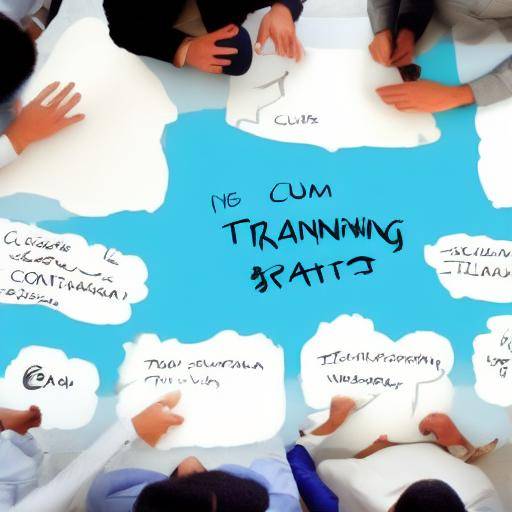
Introduction
The process of generating ideas and analysing causes are fundamental aspects in solving problems and the continuous improvement in any area, from industrial production to business management. In this article, we will explore the impact of the Ishikawa diagram technique (also known as a fish thorn diagram or cause and effect diagram) on the brainstorming, as well as its relationship with the rain of ideas and the analysis of causes. We will discover how these tools can enhance creativity, problem identification and decision-making in various situations.
History and Background
The Ishikawa diagram, developed by Professor Kaoru Ishikawa in the 1960s, has been widely recognized as a powerful tool for case analysis in quality management. The structure of the diagram, which organizes the potential causes of a problem in specific categories, provides a systematic methodology to identify and understand the interrelations between various factors.
The concept of raining ideas, on the other hand, dates back to the 1940s and was popularized by Alex Faickney Osborn, who proposed this technique as a creative approach to the generation of unrestricted ideas. The rain of ideas encourages the active participation of a group in the exploration of innovative solutions and approaches.
The analysis of causes, which is an integral part of both the Ishikawa diagram and the rain of ideas, involves the identification, examination and understanding of the reasons underlying a specific problem or situation.
Analysis in Deep
Ishikawa Diagram Benefits at Brainstorming
The Ishikawa diagram provides a visual structure that facilitates the identification and classification of potential causes, resulting in a deeper understanding of problems. By applying this technique in the context of brainstorming, teams can systematically explore the multiple facets of a given challenge, allowing a generation of ideas more focused and rich in nuances.
Current Challenges and Trends
While the Ishikawa diagram is a valuable tool, its effectiveness depends largely on the quality of data and the active participation of team members. Additional challenges arise in virtual environments, where collaboration and interaction can be limited. However, current trends point to the integration of digital tools that facilitate the remote and collaborative application of the Ishikawa diagram in the brainstorming.
Applications and Best Practices
The Ishikawa diagram has been successfully applied in a variety of sectors, from manufacturing to health services, through project management and the resolution of organizational problems. Best practices include the proper training of teams in the diagram methodology, the inclusion of multiple perspectives and the detailed documentation of findings.
Comprehensive review
Comparison between Ishikawa Diagram, Ideas Rain and Case Analysis
Although the three concepts are interrelated, each provides a unique approach to the problem identification and resolution process. While the Ishikawa diagram focuses on structured case analysis, brainstorming promotes the generation of creative ideas and case analysis provides a detailed assessment of the underlying factors.
Practical Tips and Accessible Recommendations
To effectively integrate the Ishikawa diagram into the brainstorming, it is crucial to establish an enabling environment for creativity and collaboration. The inclusion of members with different perspectives and skills, the clear definition of the problem to be addressed and the implementation of a structured process for the generation of ideas are fundamental to success.
Perceptions of Industry and Expert Reviews
Professionals from various sectors have highlighted the importance of the Ishikawa diagram in the context of the brainstorming, highlighting its ability to enrich the creative process and facilitate the identification of effective solutions. The integration of this technique with the rain of ideas and the analysis of causes has proved to be particularly beneficial in addressing complex and multifaceted challenges.
Case Studies and Practical Applications
Several case studies illustrate how the Ishikawa diagram, combined with the brainstorming, has been successfully used to solve problems in manufacturing, organizational and project management environments. These practical applications demonstrate how effective integration of these methodologies can lead to the identification of innovative solutions and continuous improvement.
Future Trends and Predictions
As organizations seek to optimize their processes and promote innovation, the integration of the Ishikawa diagram, the rain of ideas and the analysis of causes is expected to continue to evolve. Digital platforms and collaborative tools will play a crucial role in expanding these practices, allowing remote participation and efficient management of multidisciplinary projects.
Conclusions
In short, the impact of the Ishikawa diagram technique on brainstorming is significant, as it provides a practical structure for identifying causes, generating innovative ideas and making informed decisions. By combining this methodology with the rain of ideas and case analysis, organizations can enhance their ability to effectively solve problems, foster creativity and promote continuous improvement.
Frequently asked questions
What is the difference between the rain of ideas and the analysis of causes?
The rain of ideas focuses on generating unrestricted ideas, while case analysis involves the identification and detailed examination of the underlying factors to a specific problem.
How can Ishikawa diagram be applied in a virtual environment?
The application of the Ishikawa diagram in virtual environments can be achieved through the use of online collaboration tools that allow remote participation and shared visualization.
What is the role of the facilitator in the brainstorming process with the Ishikawa diagram?
The facilitator plays a crucial role in guiding the brainstorming process, facilitating the interaction of the group and ensuring compliance with the stated objectives.
What are some examples of practical Ishikawa diagram applications and brainstorming in troubleshooting?
The Ishikawa diagram and the rain of ideas have been successfully used in identifying defects in manufactured products, optimizing business processes and generating strategies for the development of new products.
What impact can the integration of the Ishikawa diagram, the rain of ideas and the analysis of causes have on the development of innovative solutions?
By combining these methodologies, organizations can foster a holistic approach to problem solving, promoting creativity, efficient identification of root causes and generating innovative and effective solutions.
How can organizations prepare to successfully implement the Ishikawa diagram in the brainstorming?
Effective preparation for the implementation of the Ishikawa diagram in the brainstorming involves the proper formation of the equipment, the clear definition of objectives and the creation of an enabling environment for collaboration and the generation of ideas.
Concluding, the Ishikawa diagram technique, brainstorming and case analysis together offer a comprehensive and effective approach to addressing challenges and promoting innovation in various contexts. By understanding their impact and applications, organizations can improve their problem-solving capabilities and promote a culture of continuous soybean based on creativity and precise identification of causes.





